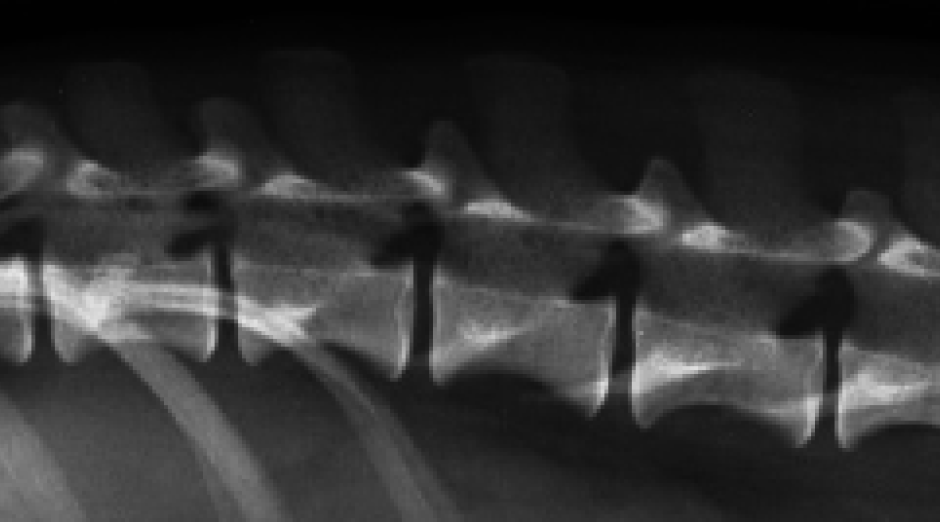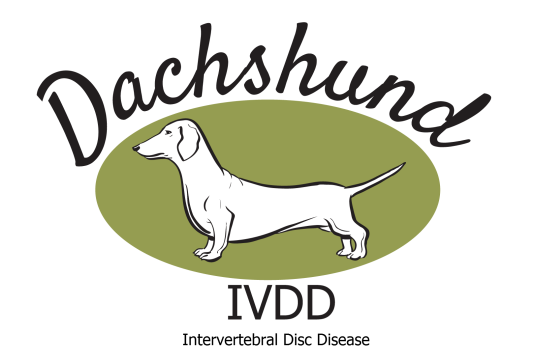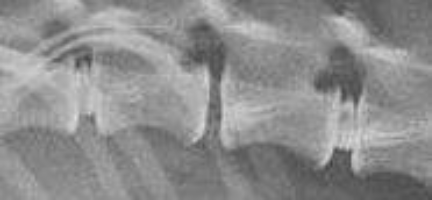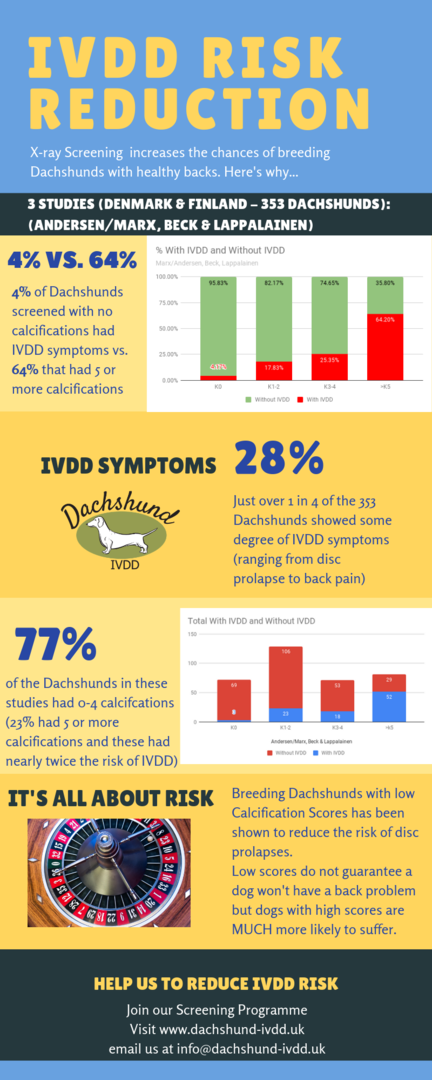
Why X-ray screening?
Calcification of the disc material is part of the disc degeneration process and, in Dachshunds, is often visible on X-rays in dogs as young as 9 months. Calcifications can be seen clearly on X-rays by the age of 2. It has been shown that calcifications are highly heritable [Jensen 2000], and dogs with many calcifications are likely to produce puppies with calcifications. In this study, if both parents had calcifications, 91% of their offspring did too; if just one parent had calcifications, only 44% of their puppies had them.
Numerous studies (since the 1960s) have shown a relationship between calcifications and IVDD. The lower the number of calcifications, the lower the risk of IVDD. In one study, of the dogs which had no calcifications, less than 1 in 10 had IVDD symptoms. In contrast, of the dogs with 5 or more calcifications, two-thirds had symptoms of IVDD. [Lappalainen 2001] Another study showed that dogs with 5 or more calcifications were 18 times more likely to have IVDD symptoms than dogs with no calcifications. [Lappalainen 2014]
Disk calcification at 2 years of age was a significant predictor of clinical disc herniation (Odds Ratio per calcified disc 1.42; 95% confidence interval, 1.19 to 1.81). [Jensen, Beck, Christensen & Arnbjerg 2008]
These studies have concluded that X-raying for calcifications is a useful tool to help breeders predict the risk of IVDD. Studies have shown that breeding from parents with low numbers of calcifications is likely to produce offspring with low numbers of calcifications, and vice versa.
Over time, a screening programme that helps breeders select against calcifications is expected to reduce the prevalence of IVDD. When sufficient data has been collected, it will be possible to develop Estimated Breeding Values (EBVs) to provide further guidance to breeders. EBVs are already being used in some of the Nordic countries where they have had X-ray schemes in place for over 20 years.
Results from the Danish Dachshund Club's screening programme, published in 2016 showed that:
- Dogs with 5 or more calcifications were 48 times more likely to have prolapsed/herniated discs than dogs with <5 calcifications.
- Dogs with 5 or more calcifications were 38 times more likely to have prolapsed/herniated discs or back pain than dogs with <5 calcifications
- Dogs with 5 or more calcifications were 20 times more likely to have back pain than dogs with <5 calcifications.



